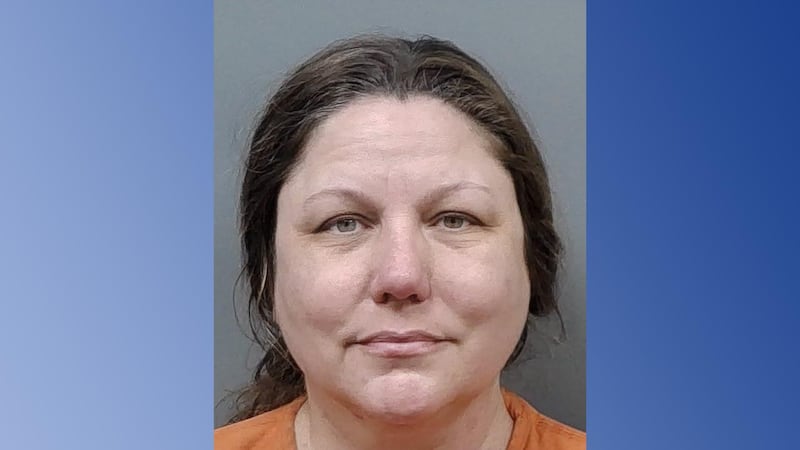ATLANTA — A federal program designed to help victims suffering from life-altering reactions to vaccines is falling short on promises made when it started.
It's called the Vaccine Injury Compensation Program, a $3.6 billion fund created to take care of victims with catastrophic reactions to vaccines.
But a Channel 2 Action News investigation found it also protects vaccine-makers from being subject to lawsuits.
And they don't pay for the program -- you do.
"I JUST HAD A BAD FEELING ABOUT IT"
Jessica Mura suffered a permanent reaction to a flu shot in 2006, a flu shot she never even wanted to get.
"I just had a bad feeling about it," she said. "I was healthy. I was 21. To me, I was on top of the world."
But the vaccine was required by her employer, a south Georgia ambulance company.
"That was my passion, helping people," said Mura. "EMTs don't make that much money, but I didn't care. I just loved what I did."
Within days of getting the shot, her co-workers noticed the symptoms.
She vividly remembers the very last time she walked. It was into an emergency room.
"It's hard to go from the person who cared for people, to be the one being cared for," said Mura.
She slipped into a coma for several months, endured 15 surgeries and had to learn to speak and eat again.
Now 31, she has a permanent brain injury and is confined to a wheelchair.
Channel 2 Investigative Reporter Jodie Fleischer asked Mura how sure she was that the flu shot caused her injuries.
"Two thousand percent," she said. "I was healthy, there was absolutely nothing wrong with me."
The federal government finally agreed, but not until seven years after she first got sick.
VACCINE-MAKERS IMMUNE FROM LAWSUITS
The program shields vaccine-makers from almost all litigation, to encourage them to remain in the risk-filled industry.
For consumers, it was supposed to be a less-complicated alternative to filing a lawsuit.
"I just knew what happened to me was wrong and I wanted to try to rectify it a little bit," Mura said.
It took her two years just to find an attorney who would stick with her case.
At the time, Diane Tiveron hadn't even heard of the Vaccine Injury Compensation Program.
"I think that there's not many attorneys that know how to handle this," Tiveron said. "It's kind of a well-kept secret in terms of what is available for people."
Even though those patients are the ones who pay for it.
Seventy-five cents of the fee from every shot given goes into that fund, which is now worth $3.6 billion.
The vaccine makers don't pay anything toward the fund.
"Whoever came up with this idea, I have to congratulate them," Tiveron said. "I mean, the manufacturers are not bearing any responsibility."
She says that's also a problem because it takes away companies' incentive to make vaccines safer, since they know they can't be sued.
In a lawsuit, the victim would have to show negligence, not just that the shot caused the injury.
This program was supposed to be faster and easier.
"That's a joke, that's completely a joke. They don't want to give you anything," Mura said. "You have to jump through hoops, walk through fire; it's not easy."
When it was created in 1989, payouts were supposed to take roughly eight months.
But a federal audit in 2014 found more than half of the cases were taking longer than five years.
More patients are filing claims, without the staff to handle the claims.
Download the Action News Jax News app and First Alert Weather app
TWO-THIRDS OF PATIENTS TURNED AWAY
"This is a drug company stockholder's dream, and a consumer's worst nightmare," said Barbara Loe Fisher, president of the National Vaccine Information Center, an advocacy group for families.
Fisher's son was a toddler when he had a reaction to a DPT vaccine.
She served as a congressional adviser when the fund was first created.
"It's completely in the hands of the Department of Health and Human Services and the Department of Justice to make this program work like we were promised it would work," Fisher said.
In the last 25 years, nearly 5,000 victims have received more than $3 billion.
But another 10,000 patients who filed claims have been turned away.
"I can appreciate people standing guard and making sure there aren't frivolous claims, but those are pretty easy to take out of the equation," Tiveron said. "So I do think it should be easier."
In 2013, the advisory committee that oversees the program requested increasing the $250,000 cap for pain and suffering, and a longer window to file a claim. Right now patients have three years.
The federal government has yet to do either.
That same advisory committee is now pushing for more judges to hear those cases.
They just voted this fall to file a formal request, but it will take congressional action to make it happen.
Tiveron says everyone who gets a shot should be told about the fund, which did ultimately give Jessica Mura more than $1.6 million for her care.
But Mura says no amount of money is worth what she's been through.
"I would give everything back ten times over if I could just walk, if I could just have my life back."
Cox Media Group




